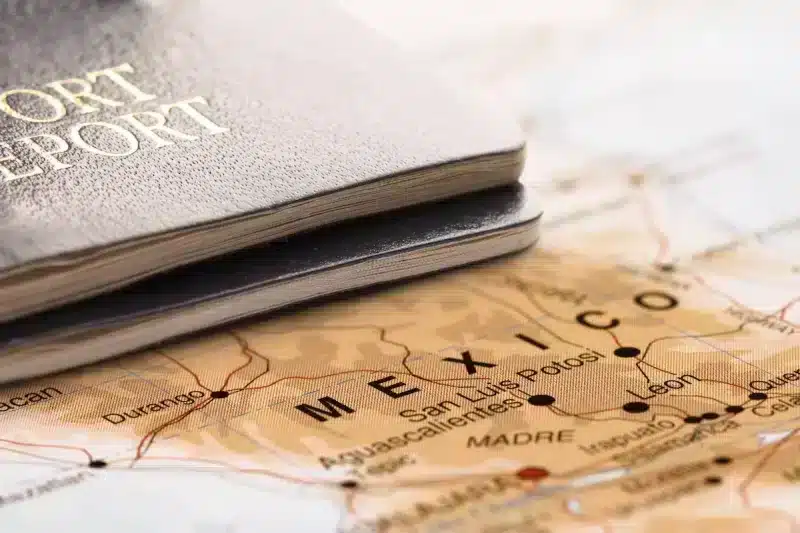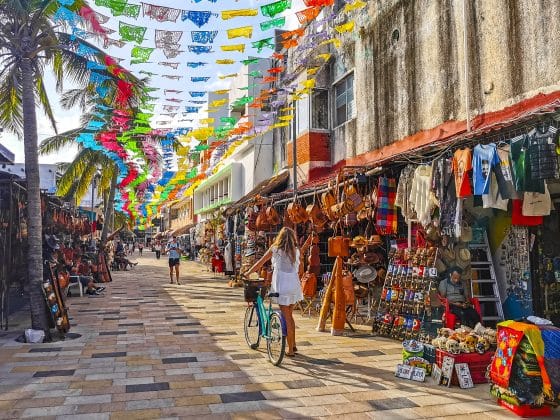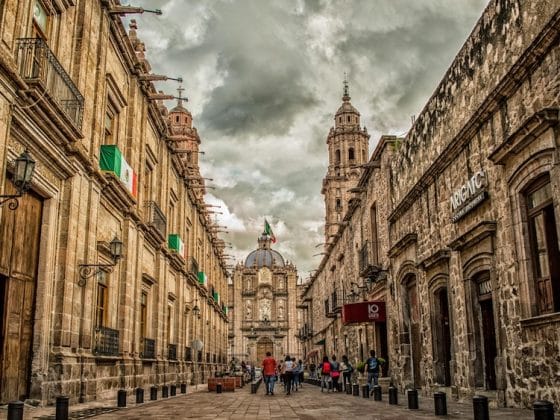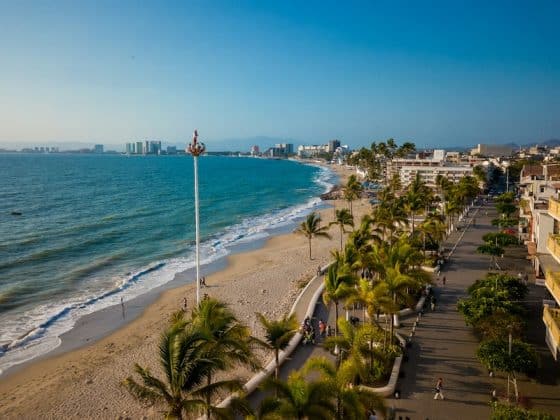For many expats, digital nomads, and retirees, moving to Mexico isn’t just a fantasy—it’s an attainable reality. Thanks to Mexico’s relatively streamlined immigration system, those who are pre-approved for residency visas at a Mexican consulate abroad can transition to full-fledged residents with a single, crucial method once inside the country: the Canje.
But while the Canje process may seem simple on paper, there’s a lot that can go sideways while navigating deadlines and shifting bureaucratic requirements. Whether you’re seeking to relocate to the sun-drenched Pacific coast, an elegant colonial inland haven, or the thriving city life and cultural renaissance in Mexico City, here’s everything you need to know to successfully convert your visa stamp into a residency card.
Before You Go: Understanding the Financial Requirements
First things first: you have to apply for residency outside the country at your local Mexican consulate. Unless you are applying through familial ties to a Mexican citizen, your residency pre-approval from the consulate will be based on your financial solvency. So, if you’re planning to stay in Mexico for more than 180 days, you’ll need to apply for either a Temporary Residency or a Permanent Residency.
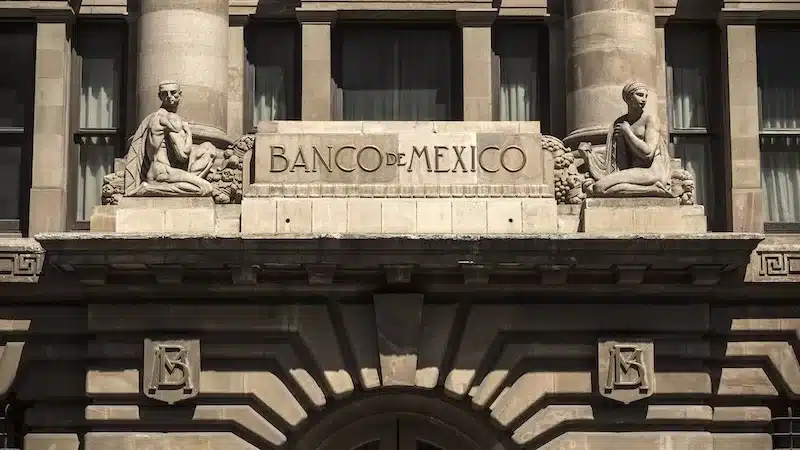
Here’s what the general income requirements look like for 2025 (although you should consult your consulate’s website for up-to-date, local information):
Temporary Residency:
- Monthly income: ~$4,083 USD/month (300 x minimum wage)
- Or savings: ~$68,066 USD (5,000 x minimum wage)
Permanent Residency:
- Monthly income: ~$6,806 USD/month (500 x minimum wage)
- Or savings: ~$272,270 USD (20,000 x minimum wage)
Remember, these are net income amounts. And they can vary wildly by consulate—some consulates in the U.S. are stricter than others, and not all will allow you to qualify based on savings. Some may require you to show retirement income or be over age 60 to apply for permanent residency without having gone through temporary first.
What About Spouses and Kids?
For families moving together, requirements vary. Some consulates require each adult to meet the income threshold independently. Others allow joint applications or permit dependents to qualify via family unification after the primary applicant receives their residency card in Mexico. This strategy is especially useful for spouses and children who might not meet financial criteria individually.
Once you are approved, a visa stamp will be issued by the consulate, but that’s just the beginning. Now, you need the residency card.
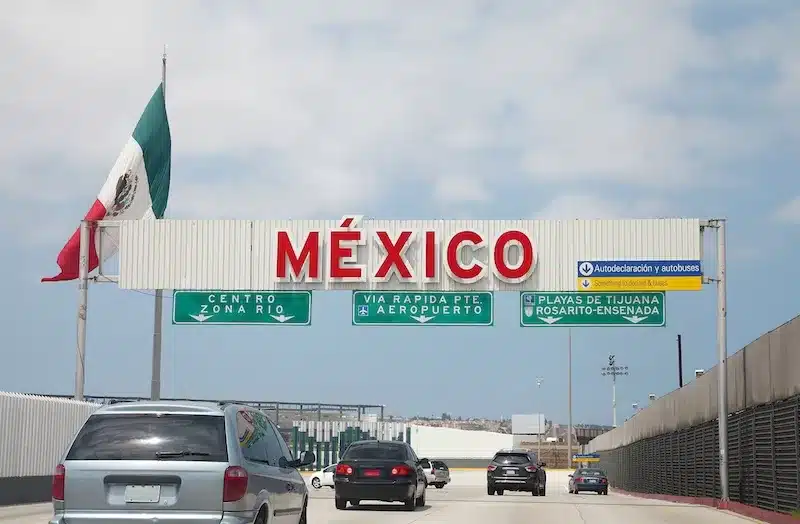
So, You’re Driving into Mexico…
Lots of people do it, especially those bringing pets or household goods with them. If you’re planning to live in Mexico, bringing your own car is often the most affordable and convenient choice.
But driving in is more than just getting in the car and crossing the border. You’ll need to successfully traverse Mexican Immigration.
Read more like this: Keeping Time in Zacatlán de las Manzanas.
The FMM (Tourist Permit)
Even if you’re driving in, you need a Forma Migratoria Múltiple, which is Mexico’s tourist permit that generally grants you 180 days. Even if no one at the border stops you and issues one, you’re still legally required to get it. As of January 1st, 2025, the FMM costs $861 MXN (about $50 USD). You can sometimes apply online ahead of time, or you can stop at the INM office (Instituto Nacional de Migración) at the border crossing and get it in person.
Now here’s where people sometimes make a mistake, especially if you’re entering Mexico with a pre-approved residency visa already in your passport. If you’re doing what’s called Canje (the process of finalizing your residency in Mexico), you must make sure the INM officer marks your FMM for Canje rather than as a tourist. If they put “tourist,” your visa stamp becomes invalid, you’ll have to leave Mexico and start the whole process over to get a new FMM.
So, when you arrive, pull over, go into the INM office, and tell them you are entering for Canje. Do not skip this step or let them wave you through. And double-check what they write on the FMM before you leave the counter.
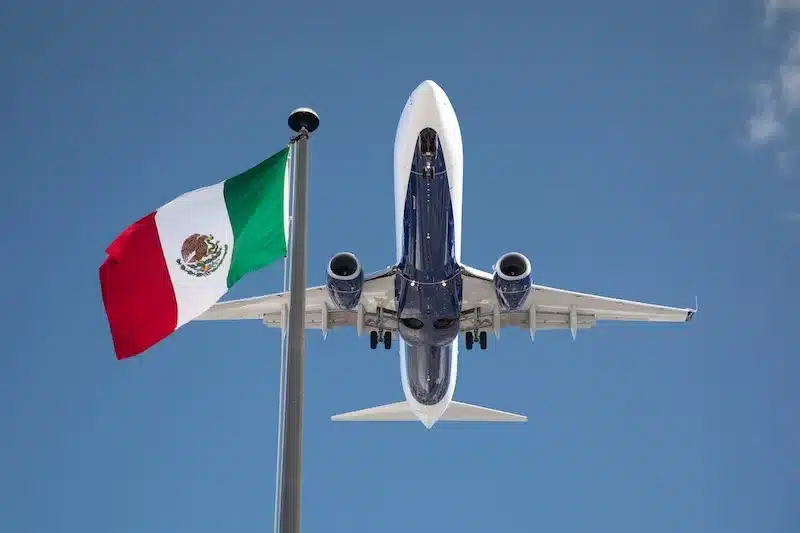
Arriving to Mexico by Plane
If you plan to fly in from abroad, it’s still critical to follow the right steps at immigration. Although immigration officers might try to usher you toward the automated kiosks (especially in Mexico City or Cancun) meant for tourists, do not use them. These will automatically register your entry as a tourist, invalidating your residency visa. Instead, head directly to a staffed immigration booth and confirm the officer provides the appropriate entry stamp.
The Canje Process: Finalizing Your Residency in Mexico
Once your residency visa is approved at a consulate, you’ll get a stamp in your passport and 180 days to enter Mexico and complete the process. When you arrive in Mexico, you’ll then have 30 days to go to an INM office and do your Canje. This is when you’ll officially become a resident and get your residency card. The Canje process requires appointments, paperwork, fees, and probably more than one trip to the office. It’s Mexican Immigration, so be ready for a little bureaucracy.
You’ll need to make an appointment online using the Cita INM scheduling system. In addition to documents like your passport, you’ll need to show proof of having paid your immigration fees and of your Mexican address. After having your paperwork approved, you will be scheduled for biometrics. Once your residency card is ready to be picked up at INM—usually a few weeks later—you will receive notification. Since the forms are in Spanish and the office might not have English speaking staff, it’s best to bring a translator if you’re not confident in your Spanish skills.
Read more like this: Guide To Buying And Owning Mexico Real Estate
Renewals, Expirations, and Upgrades
Once you have your card, you can renew your temporary residency up to 30 days before it expires. If you begin with Temporary Residency, after 4 years, you can switch to permanent residency. If your card expires while you’re outside Mexico, you also have a 55-day grace period to renew after returning.
Want to Work in Mexico?
If you’re a temporary resident, you need to apply separately for a work permit from INM—even if you’re freelancing or renting out a property.
Permanent residents don’t need a separate permit, but you still have to notify INM that you’re working and declare your job.
Family-Based Residency (No Income Requirements)
If you’re married to a Mexican citizen, have a Mexican child, or have a family member who already has legal residency, you may be able to apply for residency through family unity.
This process allows you to skip the financial requirements and apply either from your home country or from inside Mexico.
Read more like this: Mexican Eating Habits

The Bottom Line
The process of relocating to Mexico and getting residency can feel overwhelming, but with the right information, it’s absolutely doable. Make sure you:
- Get your FMM at the border and mark it properly if you’re doing Canje.
- Apply for a TIP if you’re driving beyond the free zone.
- Choose the right residency path, whether based on income or family.
- Complete the Canje process within 30 days of arriving.
- Renew on time, and upgrade when eligible.
Whether you’re moving to mexico for a better life, more sunshine, cultural immersion, or a relaxed pace, the process starts with a few well-timed documents—and the patience to work through a bit of Mexican bureaucracy.
If you’re considering traveling or moving to Mexico, be sure to explore your healthcare options. Visit International Citizens Insurance to learn more and get a free quote.
Read more like this: Unpopular Tax in Mexico
About the Author
Ulrich Baer is an author, freelance writer, and experienced traveler. His work focuses on the myriad ways history manifests itself in contemporary culture and architecture. After completing his MFA in Literary Arts at Brown University, he began exploring different regions of the world and currently calls Mexico home.
Contact Author
"*" indicates required fields
Stay Ahead on Every Adventure!
Stay updated with the World News on Escape Artist. Get all the travel news, international destinations, expat living, moving abroad, Lifestyle Tips, and digital nomad opportunities. Your next journey starts here—don’t miss a moment! Subscribe Now!
